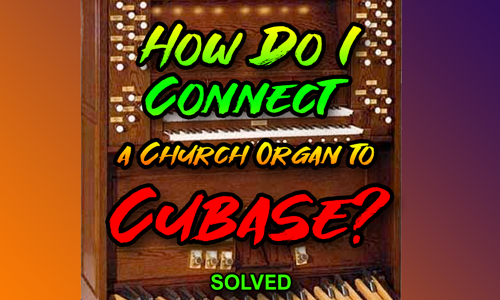The Client Brief
A client had recently purchased a second-hand electronic church organ (Viscount Canticus) and was looking to integrate it into their digital workflow.
The challenge was dual-layered:
- Recording: The organ transmits MIDI data from its three performance sections—the two manuals (Great and Swell) and the pedals—simultaneously, but on three distinct, non-editable MIDI channels (Channels 11, 12, and 14).
- Scoring: The client needed to record this single stream of MIDI and then display it correctly as a traditional three-stave organ score within Cubase’s Score Editor for eventual transfer to Sibelius.
The Solution: MIDI Dissolve and Score Preparation
This job required a systematic approach to hardware setup, MIDI configuration, and digital audio workstation (DAW) editing.
1. Establishing the MIDI Connection
First, we verified the hardware communication between the organ and the client’s system:
- A standard 5-pin MIDI cable was run from the Viscount Canticus MIDI OUT port to the client’s audio interface MIDI IN port.
- Using Cubase’s MIDI In indicator, we confirmed the DAW was successfully receiving the data stream (visually confirmed by the flashing green bar when the client played).
- Reviewing the Canticas manual confirmed the fixed MIDI channel assignment: Pedals (Ch 14), Great Manual (Ch 12), Swell Manual (Ch 11).
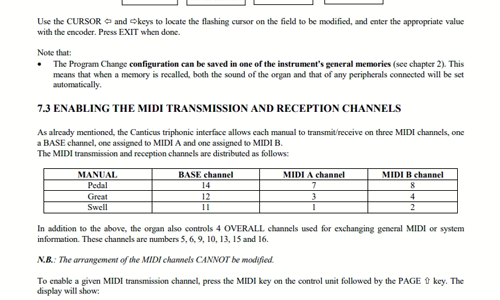
2. Recording and Channel Separation
Since the organ was hardwired to send all three parts at once, we recorded the entire performance into a single, multi-channel MIDI Region within Cubase.

The key to the solution was Cubase’s powerful editing features:
- We selected the newly recorded, single MIDI region.
- We navigated to the menu bar: Functions > MIDI > Dissolve Part.
- Crucially, we chose the option to Dissolve by Channel (rather than Dissolve by Note).
This action instantly split the single MIDI region into three distinct Cubase tracks, each containing only the data from one of the organ’s channels (Pedals, Great, or Swell). The tracks were then renamed for clarity.
3. MIDI Playback Verification
To ensure a robust, bi-directional workflow, we configured MIDI output for re-sequencing:
- A second 5-pin MIDI cable was connected from the audio interface MIDI OUT to the Viscount Canticas MIDI IN.
- The newly created Cubase tracks were configured to send MIDI back out on their respective, fixed channels (14, 12, 11).
- The client successfully played back the recorded MIDI from Cubase, proving the setup could record, edit, and transmit data back to the organ accurately.
4. Notation and Scoring
With the MIDI properly separated onto three channels, we addressed the scoring request:
- We opened the separated MIDI tracks in Cubase’s Score Editor (displaying them as musical notation rather than the default Piano Roll).
- For the Pedal track, we adjusted the score settings to use a Bass Clef to match traditional organ notation.
This prepared the score perfectly for the client’s needs. While we discussed the option of setting up an advanced MIDI script to automate the “Dissolve” process immediately after recording, the client was happy with the manual process for now, as it gave them complete control over the initial recording.
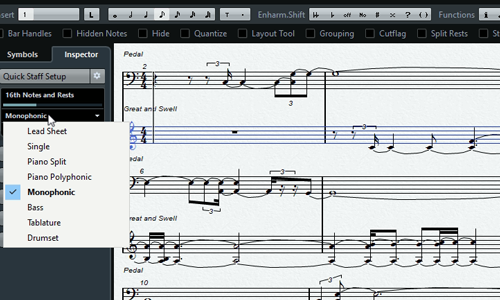
The Result
A week after the session, the client confirmed the complete success of the process:
Dear Paul,
Hope you are keeping well.
I am just writing to thank you for your tutorial on Monday morning. I have tried the techniques you showed me and have managed to write a complete piece for the organ using Cubase!
Furthermore I applied what you had showed me in a previous lesson and have managed to transfer the score to Sibelius!
Needless to say I am over the moon!
Till the next time-
Best wishes,
JC
The client now has a reliable, repeatable workflow for integrating their electronic church organ with professional DAWs and scoring software.
Recent Reviews
Let’s Get Your System Running Smoothly.
No automated tickets, no waiting queues — just one-to-one help from an experienced music technology specialist. I’ll connect to your system remotely, identify the issue, and guide you through the fix.
I usually reply to enquiries within a few hours during UK weekday daytime.
Once you make an enquiry, I’ll read it personally and reply with initial advice or a link to book a remote session if needed.
For booked sessions, you’ll receive a secure AnyDesk link and we’ll talk via WhatsApp or voice chat. Sessions last up to an hour — long enough to diagnose the cause and apply a practical fix.
Make an Enquiry
I’ll reply personally as soon as I can — usually within a few hours during UK daytime.
Book Your Session Securely Online
You can book your Audio Support session instantly using the secure form below.
Choose a time that suits you — I’ll confirm by email and send remote-access details before your appointment.

Outside the UK? Use the Timezone icon to book in your local time.
- 💳 Session fee: £90 per hour (UK Pound Sterling)
- ⏱️ Availability: Usually within 1–2 days.
- 🗓️ Duration: Each session lasts one hour.
- 🔁 Rescheduling: Sessions can be moved up to 24 hours in advance.
- 🔒 Security: Remote access is one-time only and closes automatically when the session ends.
- 🌍 Timezone: Default times shown are UK (GMT/BST). Use the timezone Icon to set to your local time
You don’t have to keep guessing what’s wrong — I’ll help you find the cause and fix it, so you can get back to making music.
More Case Studies
Recent problems solved for real clients.
AI as a Creative Partner: A Case Study on Using Suno with Cubase
23 November 2025
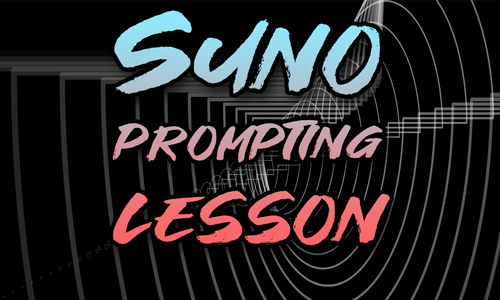
Client’s Question
How can I use Suno AI with my own acapella from Cubase?
Session Result
Created a custom, AI-generated backing track in Suno from a Cubase vocal export.
Read Full Case Study Report: AI as a Creative Partner: A Case Study on Using Suno with CubasePro Tools Display Scaling Fix on Windows 10/11
23 November 2025
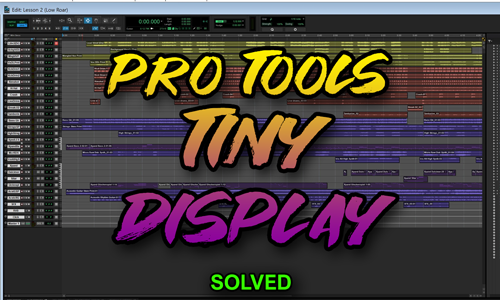
Client’s Question
Why is Pro Tools tiny on my new 4K monitor?
Session Result
Pro Tools display scaling fixed using Windows compatibility override.
Read Full Case Study Report: Pro Tools Display Scaling Fix on Windows 10/11MicroKorg MIDI Sync and Setup Issues in Logic Pro
20 November 2025

Client’s Question
MicroKorg arpeggiator not syncing to Logic Pro tempo
Session Result
Diagnosis confirmed potential hardware or cable fault; alternative routing proposed.
Read Full Case Study Report: MicroKorg MIDI Sync and Setup Issues in Logic Pro
Client’s Question
Can I book an expert to remotely fix my Logic Pro problems?
Session Result
Yes! Audio Support provides remote troubleshooting services. Here are 5 examples showcasing our work.
Read Full Case Study Report: 5 Logic Pro Problems FIXED: Expert Remote Troubleshooting Case Studies